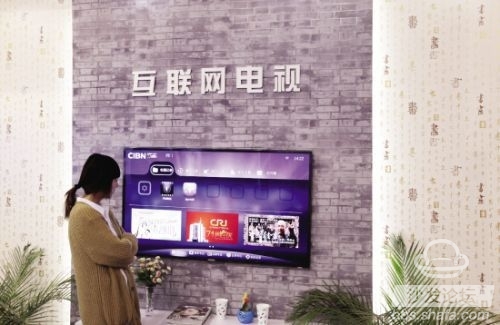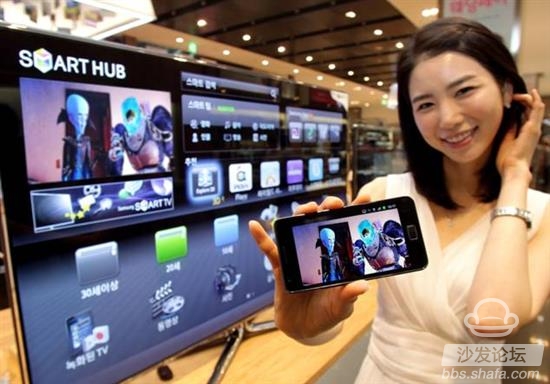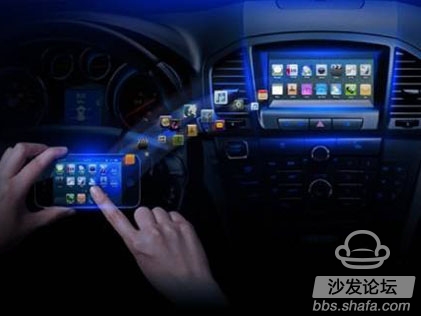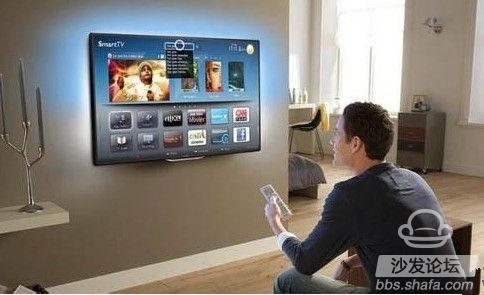During the "618" online shopping spree, smart TV sales of a number of well-known manufacturers have shown significant growth. At one time, the color TV industry, suspected to be in a state of turbulence, was stepping into a new world of bright and imaginative colors by accelerating the transformation and upgrading, making power smart TVs, and accumulating popularity and business opportunities.
TV back to center of sight
Smart TV adapts to the trend of networked and intelligent development, has an operating system platform and network access capabilities, and is highly scalable.

The data shows that in 2014, the sales volume of TVs in the domestic market was negative. This year's situation is still not optimistic, and the performance of various companies has generally declined. After years of high growth, the large-scale development of the color TV industry hit the ceiling of the market. Not only that, but worse news came that the traditional TV operating rate dropped below 30%. Smart phones such as mobile phones and PADs gradually erode the market. Many young people have formed a habit of immersing themselves in small screens. It is as if the family is sitting around enjoying the scene of watching TV.
Faced with such heavy pressure, color TV industry is still lacking in anger. Not only the stock price of listed companies has risen, but also the influx of capital and companies from all quarters, the trend of smart TV is heating up.
Smart TV conforms to the trend of networked and intelligent development. In addition to the traditional functions of audio-visual hardware, it also has an operating system platform, application support environment, and network access functions. It has strong scalability, and users can independently install and uninstall various types of audio and video hardware. Applications can meet the needs of diversification and personalization. This is a major upgrade of the color TV industry.
In terms of audiovisual aspects, compared to traditional TVs, smart TVs provide live TV programs and support online video content on demand. The autonomy of viewers increases. Compared with small screens such as mobile phones and PADs, smart TVs have a large screen and are better for viewers. Get more relaxed and exciting audio-visual enjoyment. This fundamentally reversed the situation of the loss of the audience, allowing the television to return to the video to play at home.
"It is an illusion that viewers are escaping from the TV." Zhi Zhitao, CEO of Haishi Cloud, an independent operating platform of Hisense, told reporters that the era of large-screen video has arrived and television stations can no longer accurately reflect the actual needs of viewers.
Background data shows that Hisense TV has more than 4 million active Internet users per day, and the daily activity rate exceeds 40%, far exceeding the operating rate of traditional TV. From the comparison of mobile data and TV large-screen data, the size of Hisense TV video users is growing at an annual growth rate of more than 100%, and the growth rate of mobile end users across the industry has slowed to below 30%. In terms of video per user viewing time, Hisense TV users are about 3.75 times mobile video users.
Large-screen video playback, just smart TV initial chopper. With the development of the Internet economy in depth, the focus of the market has experienced a shift from the PC to the mobile. After the slowdown in the mobile phone market, people have turned their attention to the home Internet. Its market size is expected to be trillions, while smart TVs It is considered the biggest outlet.

"If the mobile phone is an extension of the human body, then will television be an extension of the family in the process of social evolution?" said Liu Wei, vice president of Orville Cloud Network, the innovative energy and industrial scale of smart phones as personal mobile terminals It is obvious to all that Smart TV is also worth looking forward to as a new hot spot. In all kinds of home appliances, white goods are basically "subtractive", and they use specific functions to save people time and effort, and television is "doing addition" to attract people to spend more time and generate value. Therefore, the color TV, which has the largest display screen, is revalued by the capital market.
It is reported that smart TVs have the advantages of large screens and high operational capabilities, and will become an important control center and entertainment terminal for home Internet. It can realize the interconnection of home appliances and can import videos, health, education, games, social networking, payment and other colorful content and applications. The vast majority of TV users are shifting from watching TV to using TV. There are huge business opportunities.
From selling hardware to lap users
Internet companies are involved in smart TVs and do not expect to make money from hardware. Instead, they must use content and application advantages.
As the value of smart TV industry is prominent, not only color TV companies, Internet companies, operators and other companies are all willing to win, and fierce competition around consumer demand, the market is booming for a time.
Since 2013, Internet companies such as LeTV and Xiaomi have been making smart TVs and the offensive has been fierce. Last year, LeTV sold more than 1.5 million units of super TV, making it a new force in the color TV market. This year, LeTV also set a sales target of 3.5 million to 4 million units, and began to push from the online to the offline through the LePar Super Partner model to expand the broader second and third tier cities and urban markets, and traditional color TV channels Launched short-sleeved competition.
Internet companies are involved in smart TVs and do not expect to make money with hardware. Instead, they want to seize the entrance and enclose users, and use their content and application advantages. Under the impact of cost-based pricing, such as LeTV and Xiaomi, the average price of smart TVs has been continuously declining, and the market penetration has increased significantly. Ove Cloud Network omnichannel data shows that in April 2013, the average price of smart TVs in China's color TV retail market was 5,288 yuan, and the sales penetration rate was 42.2%. In March 2015, the average price of smart TVs was 4010 yuan, and the sales penetration rate was 72.1%. In just 2 years, the average price dropped by 1,278 yuan, and the penetration rate increased by nearly 30 percentage points.

The drastic changes in the market situation have led color TV companies to realize that simply relying on hardware to make profits has become impracticable, and that it is necessary to apply both hardware and software to the transformation of user operations and services. Therefore, relying on the manufacturing, R&D and brand advantages formed over many years, they persisted in creating quality products to attract high-end consumer groups. In addition, they also established Internet TV sub-brands to learn how to play Internet companies and attract high-end products with low prices. consumer.
In order to win the battle for this smart TV user, all enterprises frequently make heavy fists. Hisense proposes to enrich and improve three types of product lines to cover existing and future user groups. The first is the "laser theater" product line that serves the content of the Internet theater. The laser cinema TV size will focus on more than 80 inches to meet the high-quality audio and video needs. Users can experience the shocking effects of the cinema at home on-demand; the second is a smart TV product line serviced by Internet video, with a size of 50 to 50 80-inch, mainly based on ULED smart TV products; the third, to create a VIDAA TV for young people in the geek way, the size of 32-50 inches.
CoolCube, an independent Internet brand that was split up and operated as Skyworth, emphasizes precision and is the first to introduce personalized customization. The company’s product manager, Chen Yongbin, introduced that in order to meet the needs of the family, Kukai will integrate three sets of personalization systems into one TV to create exclusive TVs targeting different groups of children, young people and the elderly. In this way, it has broken the limitations of previous Internet TVs targeting only young audiences, and has a broader audience. It also increases the frequency of television use and increases the boot time, laying a solid foundation for television operations.
Explore the value of realizing users
With the increase in the activation of smart TV users and the increase in activity, the color TV industry has begun to try to create new profit growth points.
The battle for enclosures in the field of smart TVs is essentially a battle for user value. Hisense Hui, the general manager of Hisense Electric, analyzed that the core of Internet companies is "user value." Whoever is closest to the user will be the most valuable to the user; whoever has the most value will have the largest number of users, while the value of the user's feedback will be the greatest.

According to the latest data, the cumulative activation of Hisense smart TVs exceeds 10 million units and is expected to increase to more than 30 million by 2017 with a population of more than 100 million. Skyworth Smart TV increased the number of active users to 16,517, and the number of daily active users exceeded 313 million. With the increase in the activation of smart TV users and the increase in activity, the color TV industry has begun to explore platform operations and user maintenance, attempting to realize user value and create new profit growth points by providing content and application services.
Video on demand charging conditions have gradually matured. LeTV Super TV adopts a backward charging mode. Purchasers need to pay a certain annual fee to watch LeTV’s own video content, and realize the bundled sales of hardware and software. TV companies are cooperating with Internet TV integration service licensees and video websites to provide users with massive video on demand content and explore some of the charging methods. According to a questionnaire survey conducted by the Smart TV Center, 52.8% of consumers think that on-demand payment of 5 yuan per film is acceptable for new movies from the 1-3 month period; most consumers can receive annual payments. Pay 100 yuan.
The advertising business has made progress. Smart TV users can use sub-regions, sub-screens, and sub-users to accurately place ads based on big data, which is attractive to advertisers. Cool open in 3 months to get some TV ads, operating income of 2.68 million yuan. Hisense has made greater progress. Recently, JDB and Mengniu announced the signing of a strategic cooperation agreement with Haishi Cloud as the first advertisers to launch video advertisements on the Haishi Cloud Platform with a contract value of 10 million yuan.
TV shopping has a bright future. Relevant data show that in the United States, South Korea and Japan where TV shopping is more developed, the television shopping industry's sales accounted for about 8% to 12% of the total retail sales of consumer goods. The proportion in China is less than 1%. Haier cooperated with e-commerce giant Ali in order to encourage users to spend on Haier Ali TV V shopping plaza, and plans to subsidize more than 2 billion yuan this year. Hisense, with its cross-border shopping products as its entry point, collaborated with The K Group of South Korea to create a “Enjoy†shopping platform. The platform can provide users with genuine Korean goods and direct mail services, and enjoy the same price as the airport duty-free shops, and some products even reach a 10% discount on duty-free shops.
According to the calculations of Ove Cloud Network, the living room eco-economy in 2018, which includes smart TV terminal sales, peripherals purchase, video on demand, video games, etc., will be able to generate an output value of approximately RMB360 billion.
"In the next five years, we hope that the profits generated by Hisense's content and services will be greater than or equal to the profits of current hardware sales." Dai Huizhong stated that as a truly "Internet company," Hisense's growth has only just begun.
![]()

![]()
TV back to center of sight
Smart TV adapts to the trend of networked and intelligent development, has an operating system platform and network access capabilities, and is highly scalable.

The data shows that in 2014, the sales volume of TVs in the domestic market was negative. This year's situation is still not optimistic, and the performance of various companies has generally declined. After years of high growth, the large-scale development of the color TV industry hit the ceiling of the market. Not only that, but worse news came that the traditional TV operating rate dropped below 30%. Smart phones such as mobile phones and PADs gradually erode the market. Many young people have formed a habit of immersing themselves in small screens. It is as if the family is sitting around enjoying the scene of watching TV.
Faced with such heavy pressure, color TV industry is still lacking in anger. Not only the stock price of listed companies has risen, but also the influx of capital and companies from all quarters, the trend of smart TV is heating up.
Smart TV conforms to the trend of networked and intelligent development. In addition to the traditional functions of audio-visual hardware, it also has an operating system platform, application support environment, and network access functions. It has strong scalability, and users can independently install and uninstall various types of audio and video hardware. Applications can meet the needs of diversification and personalization. This is a major upgrade of the color TV industry.
In terms of audiovisual aspects, compared to traditional TVs, smart TVs provide live TV programs and support online video content on demand. The autonomy of viewers increases. Compared with small screens such as mobile phones and PADs, smart TVs have a large screen and are better for viewers. Get more relaxed and exciting audio-visual enjoyment. This fundamentally reversed the situation of the loss of the audience, allowing the television to return to the video to play at home.
"It is an illusion that viewers are escaping from the TV." Zhi Zhitao, CEO of Haishi Cloud, an independent operating platform of Hisense, told reporters that the era of large-screen video has arrived and television stations can no longer accurately reflect the actual needs of viewers.
Background data shows that Hisense TV has more than 4 million active Internet users per day, and the daily activity rate exceeds 40%, far exceeding the operating rate of traditional TV. From the comparison of mobile data and TV large-screen data, the size of Hisense TV video users is growing at an annual growth rate of more than 100%, and the growth rate of mobile end users across the industry has slowed to below 30%. In terms of video per user viewing time, Hisense TV users are about 3.75 times mobile video users.
Large-screen video playback, just smart TV initial chopper. With the development of the Internet economy in depth, the focus of the market has experienced a shift from the PC to the mobile. After the slowdown in the mobile phone market, people have turned their attention to the home Internet. Its market size is expected to be trillions, while smart TVs It is considered the biggest outlet.

"If the mobile phone is an extension of the human body, then will television be an extension of the family in the process of social evolution?" said Liu Wei, vice president of Orville Cloud Network, the innovative energy and industrial scale of smart phones as personal mobile terminals It is obvious to all that Smart TV is also worth looking forward to as a new hot spot. In all kinds of home appliances, white goods are basically "subtractive", and they use specific functions to save people time and effort, and television is "doing addition" to attract people to spend more time and generate value. Therefore, the color TV, which has the largest display screen, is revalued by the capital market.
It is reported that smart TVs have the advantages of large screens and high operational capabilities, and will become an important control center and entertainment terminal for home Internet. It can realize the interconnection of home appliances and can import videos, health, education, games, social networking, payment and other colorful content and applications. The vast majority of TV users are shifting from watching TV to using TV. There are huge business opportunities.
From selling hardware to lap users
Internet companies are involved in smart TVs and do not expect to make money from hardware. Instead, they must use content and application advantages.
As the value of smart TV industry is prominent, not only color TV companies, Internet companies, operators and other companies are all willing to win, and fierce competition around consumer demand, the market is booming for a time.
Since 2013, Internet companies such as LeTV and Xiaomi have been making smart TVs and the offensive has been fierce. Last year, LeTV sold more than 1.5 million units of super TV, making it a new force in the color TV market. This year, LeTV also set a sales target of 3.5 million to 4 million units, and began to push from the online to the offline through the LePar Super Partner model to expand the broader second and third tier cities and urban markets, and traditional color TV channels Launched short-sleeved competition.
Internet companies are involved in smart TVs and do not expect to make money with hardware. Instead, they want to seize the entrance and enclose users, and use their content and application advantages. Under the impact of cost-based pricing, such as LeTV and Xiaomi, the average price of smart TVs has been continuously declining, and the market penetration has increased significantly. Ove Cloud Network omnichannel data shows that in April 2013, the average price of smart TVs in China's color TV retail market was 5,288 yuan, and the sales penetration rate was 42.2%. In March 2015, the average price of smart TVs was 4010 yuan, and the sales penetration rate was 72.1%. In just 2 years, the average price dropped by 1,278 yuan, and the penetration rate increased by nearly 30 percentage points.

The drastic changes in the market situation have led color TV companies to realize that simply relying on hardware to make profits has become impracticable, and that it is necessary to apply both hardware and software to the transformation of user operations and services. Therefore, relying on the manufacturing, R&D and brand advantages formed over many years, they persisted in creating quality products to attract high-end consumer groups. In addition, they also established Internet TV sub-brands to learn how to play Internet companies and attract high-end products with low prices. consumer.
In order to win the battle for this smart TV user, all enterprises frequently make heavy fists. Hisense proposes to enrich and improve three types of product lines to cover existing and future user groups. The first is the "laser theater" product line that serves the content of the Internet theater. The laser cinema TV size will focus on more than 80 inches to meet the high-quality audio and video needs. Users can experience the shocking effects of the cinema at home on-demand; the second is a smart TV product line serviced by Internet video, with a size of 50 to 50 80-inch, mainly based on ULED smart TV products; the third, to create a VIDAA TV for young people in the geek way, the size of 32-50 inches.
CoolCube, an independent Internet brand that was split up and operated as Skyworth, emphasizes precision and is the first to introduce personalized customization. The company’s product manager, Chen Yongbin, introduced that in order to meet the needs of the family, Kukai will integrate three sets of personalization systems into one TV to create exclusive TVs targeting different groups of children, young people and the elderly. In this way, it has broken the limitations of previous Internet TVs targeting only young audiences, and has a broader audience. It also increases the frequency of television use and increases the boot time, laying a solid foundation for television operations.
Explore the value of realizing users
With the increase in the activation of smart TV users and the increase in activity, the color TV industry has begun to try to create new profit growth points.
The battle for enclosures in the field of smart TVs is essentially a battle for user value. Hisense Hui, the general manager of Hisense Electric, analyzed that the core of Internet companies is "user value." Whoever is closest to the user will be the most valuable to the user; whoever has the most value will have the largest number of users, while the value of the user's feedback will be the greatest.

According to the latest data, the cumulative activation of Hisense smart TVs exceeds 10 million units and is expected to increase to more than 30 million by 2017 with a population of more than 100 million. Skyworth Smart TV increased the number of active users to 16,517, and the number of daily active users exceeded 313 million. With the increase in the activation of smart TV users and the increase in activity, the color TV industry has begun to explore platform operations and user maintenance, attempting to realize user value and create new profit growth points by providing content and application services.
Video on demand charging conditions have gradually matured. LeTV Super TV adopts a backward charging mode. Purchasers need to pay a certain annual fee to watch LeTV’s own video content, and realize the bundled sales of hardware and software. TV companies are cooperating with Internet TV integration service licensees and video websites to provide users with massive video on demand content and explore some of the charging methods. According to a questionnaire survey conducted by the Smart TV Center, 52.8% of consumers think that on-demand payment of 5 yuan per film is acceptable for new movies from the 1-3 month period; most consumers can receive annual payments. Pay 100 yuan.
The advertising business has made progress. Smart TV users can use sub-regions, sub-screens, and sub-users to accurately place ads based on big data, which is attractive to advertisers. Cool open in 3 months to get some TV ads, operating income of 2.68 million yuan. Hisense has made greater progress. Recently, JDB and Mengniu announced the signing of a strategic cooperation agreement with Haishi Cloud as the first advertisers to launch video advertisements on the Haishi Cloud Platform with a contract value of 10 million yuan.
TV shopping has a bright future. Relevant data show that in the United States, South Korea and Japan where TV shopping is more developed, the television shopping industry's sales accounted for about 8% to 12% of the total retail sales of consumer goods. The proportion in China is less than 1%. Haier cooperated with e-commerce giant Ali in order to encourage users to spend on Haier Ali TV V shopping plaza, and plans to subsidize more than 2 billion yuan this year. Hisense, with its cross-border shopping products as its entry point, collaborated with The K Group of South Korea to create a “Enjoy†shopping platform. The platform can provide users with genuine Korean goods and direct mail services, and enjoy the same price as the airport duty-free shops, and some products even reach a 10% discount on duty-free shops.
According to the calculations of Ove Cloud Network, the living room eco-economy in 2018, which includes smart TV terminal sales, peripherals purchase, video on demand, video games, etc., will be able to generate an output value of approximately RMB360 billion.
"In the next five years, we hope that the profits generated by Hisense's content and services will be greater than or equal to the profits of current hardware sales." Dai Huizhong stated that as a truly "Internet company," Hisense's growth has only just begun.
This content is copyrighted exclusively by SofaNet. Welcome manufacturers to further exchanges and cooperation with us to create more in-depth product reports.

Smart TV box recommended to install sofa butler, download address: http://app.shafa.com/
Sofa Net is an Internet technology company specializing in smart TVs and boxes. It owns popular products such as sofa butlers, sofa tables, and sofa forums. It has been committed to providing high quality application resources for smart TV and TV box users and active community exchanges. And authoritative evaluation of smart TV products.
he working principle of a switching power supply involves converting the input AC voltage into a DC voltage, then using a switching element (e.g., a MOSFET or IGBT) to switch the DC voltage on and off at a high fre
quency. This switching action generates a high-frequency AC signal, which is then transformed and rectified to produce the desired output DC voltage. The output voltage is regulated through a feedback loop that senses the output voltage and adjusts the switching frequency or duty cycle accordingly.
Applications
Switching power supplies are ubiquitous in modern electronics, powering a wide range of devices including:
Computers and peripherals
Telecommunications equipment
LED lighting systems
Industrial automation systems
Medical devices
Portable electronic devices (e.g., smartphones, tablets, laptops)
Switching Power Supply,48V Switching Power Supply,72W Switching Power Supply,Ce Switching Power Supply
Guang Er Zhong(Zhaoqing)Electronics Co., Ltd , https://www.cnadaptor.com
